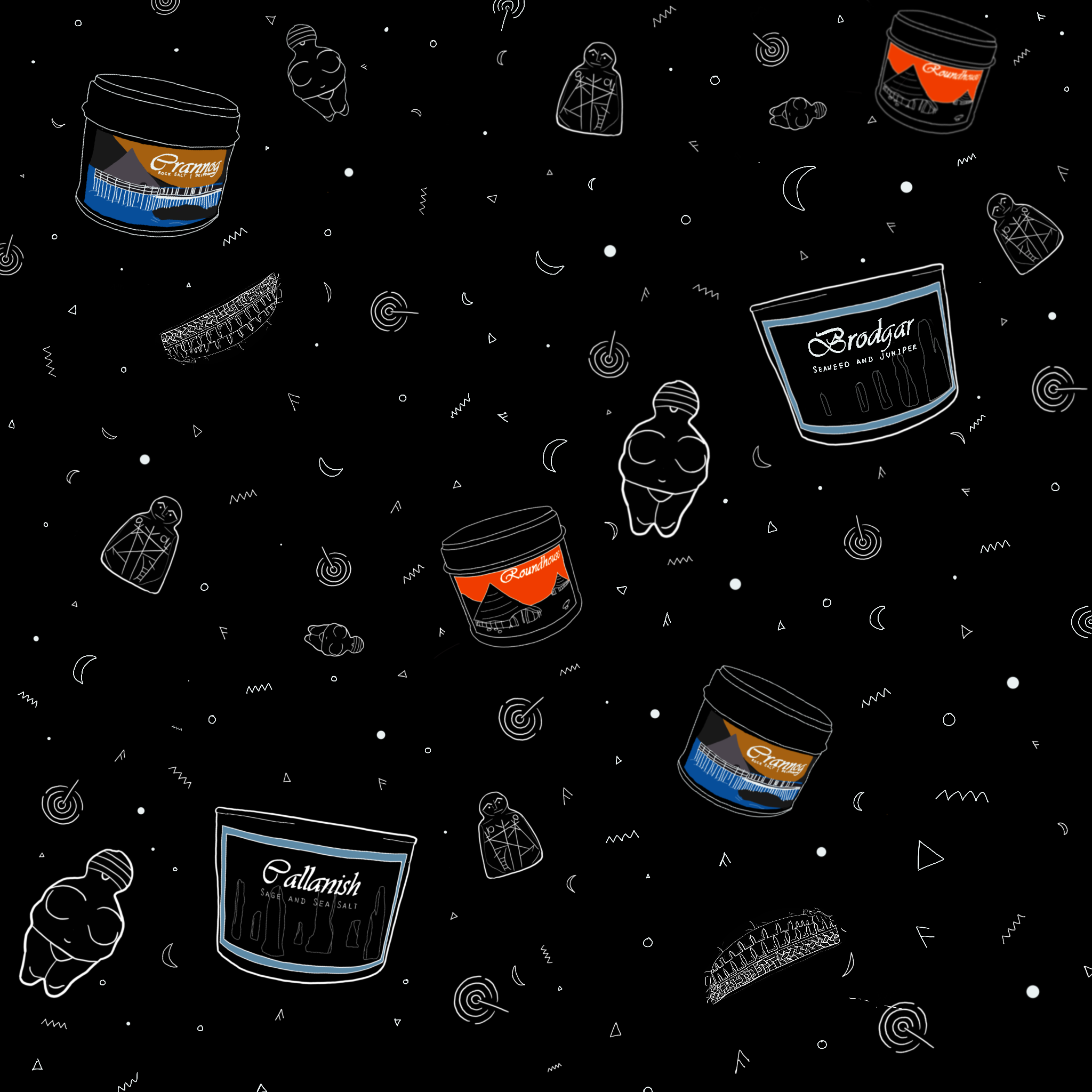
Rocking the Prehistoric Look
Rock Art was a central part of prehistoric belief systems and can be found in various forms across the world.
They communicate the beliefs, thoughts, and ideas of prehistoric people and open the world of the Neolithic and Early Bronze Age to us in the modern era.
Dunchriagaig Deer
The Dunchriagaig Deer carvings are located inside Dunchraigaig Cairn, Kilmartin Glen, and were discovered in 2021. It’s thought that they are to be between 4,000 and 5,000 years old, making them the earliest animal carvings in Scotland.
The carvings themselves depict a gathering of a least five animals, including two stags with large, broad antlers, and two young males. They are thought to be naturalistic representations of male red deer.
Deer feature greatly in the myths and legends of Scotland, and beyond. They are sacred to many cultures and are often symbols of hunting, fertility, seasonal cycles, clan identity, totemic and shamanic practices. It’s unknown if the Dunchriagaig Deer represent these ancient beliefs, but it is thought, since they were found within a burial chamber they represent death, the afterlife, or relate to the social identity of the deceased.
Tanum Petroglyphs
The Tanum Petroglyphs are located in Tanum, in the north of Bohuslän Province, Sweden. There are over 600 panels of rock art within the UNESCO World Heritage Site. They represent the beliefs of prehistoric people living in the Nordic region of Bronze Age Europe.
14,000 years ago, as the Scandinavian Ice Sheet moved north, the land that is now known as Northern Bohuslän, was scraped clean revealing gently curving granite rock faces. A perfect canvas for a Bronze Age artist.
Rock art motifs found at Tanum depict lively scenes of animals, humans, ships, weapons, and symbols of the Bronze Age. They’re complex, elaborate, and most likely preplanned in order to reflect the life and cosmology of the Nordic Bronze Age (c.1700 BCE - 500 BCE).
Cup and Ring Marks
Cup and Ring marks are an extremely common motif found throughout Scotland and beyond. They are often found on prehistoric monuments, such as burial carins, stone circles, and standing stones. They date from the Neolithic, the Bronze Age, and even have been seen on Pictish carvings and stone work.
Carvings like these were used by early farming communities during prehistory and often have similar motifs such as pecked cups, rings, and even linear markings.
We don’t yet understand their meaning, which makes them intriguing to many archaeologists to this day. However, we know that they were important symbols of prehistoric life and lifeways within Scotland.




